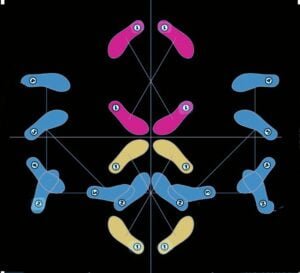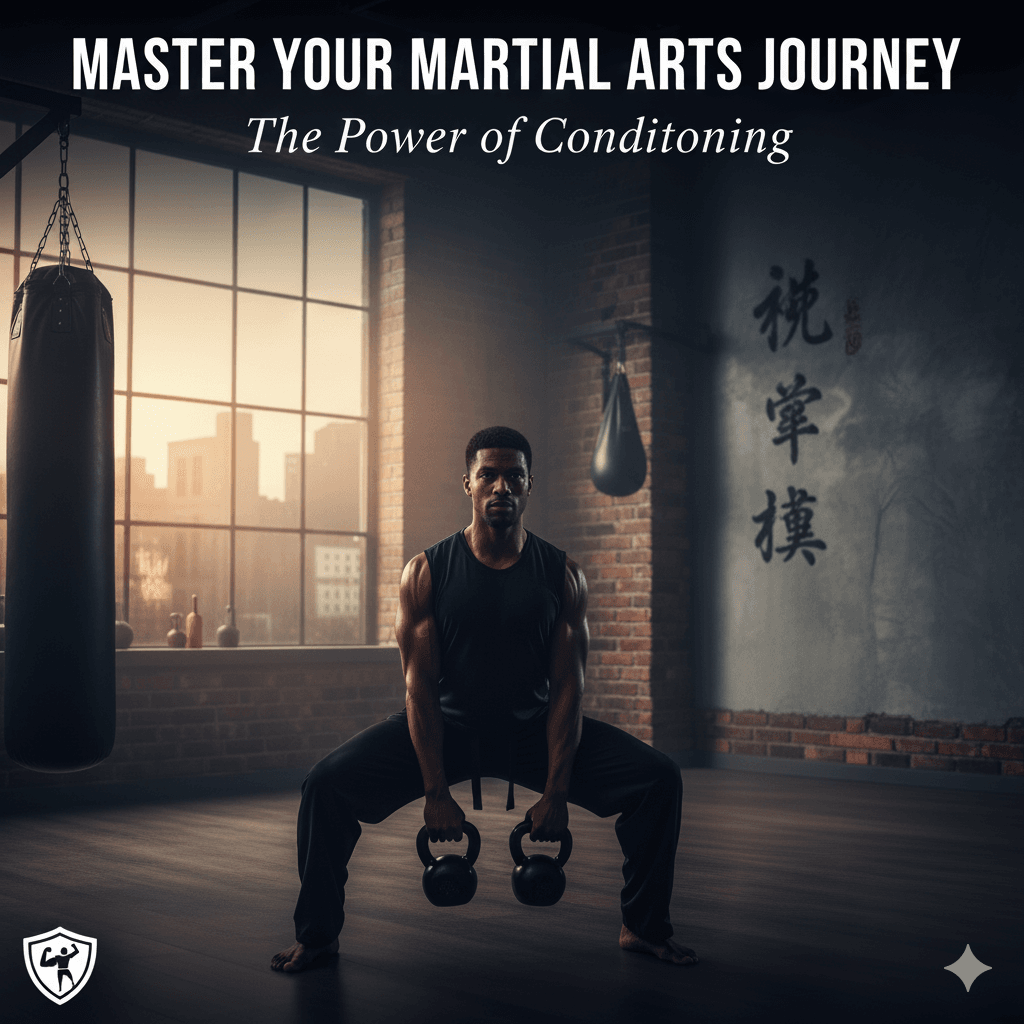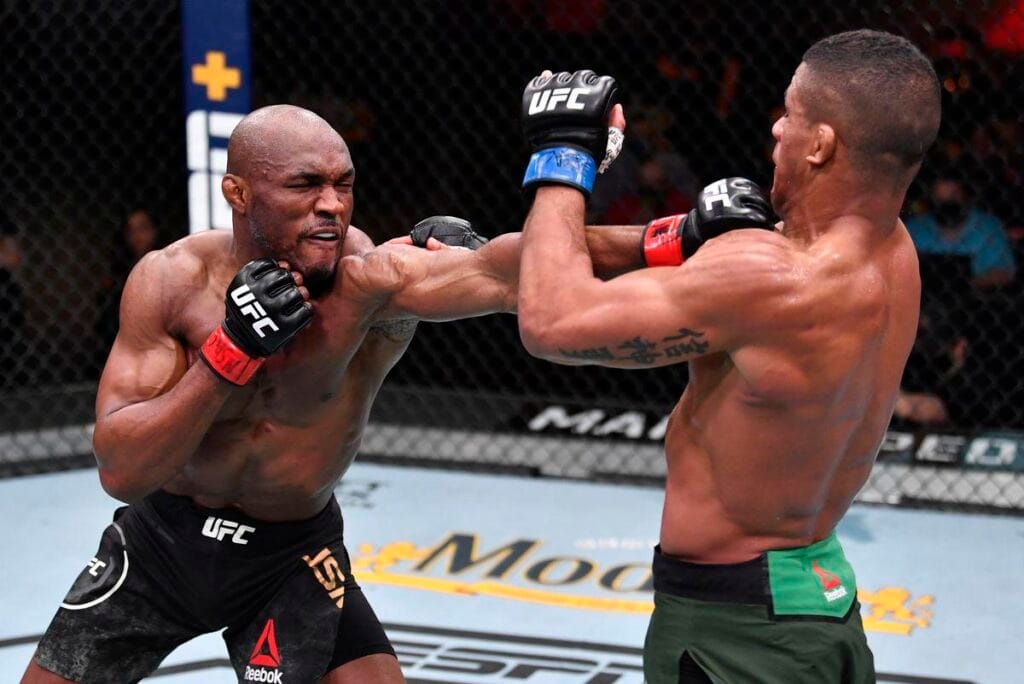In the realm of martial arts, mastering body posture is pivotal for achieving optimal performance, preventing injuries, and refining technique.
Central to this mastery are three key elements: alignment, balance, and stability.
Proper alignment of the body ensures that the skeletal and muscular systems work harmoniously, reducing strain and enhancing efficiency.
This alignment is particularly critical in disciplines like Wing Chun, where the economy of motion and structural integrity are paramount.
Balance is another cornerstone of effective body posture.
It allows martial artists to maintain control and agility, enabling swift transitions between movements while minimizing the risk of falling or being easily unbalanced by an opponent.
A balanced stance provides a solid foundation, from which power can be generated and applied efficiently.
In Wing Chun, the concept of rootedness, or having a stable connection with the ground, is emphasized, ensuring that practitioners remain steady even under pressure.
Stability, closely linked with balance, involves the ability to hold a position or move without losing equilibrium.
This stability is crucial during both offensive and defensive maneuvers.
Techniques in Wing Chun, for instance, rely heavily on maintaining a stable structure to deflect attacks and deliver counterstrikes effectively.
A stable posture also aids in conserving energy, allowing for sustained performance during prolonged bouts.
Achieving and maintaining good posture during training and combat requires mindful practice.
Start with a neutral stance, aligning the head, spine, and pelvis.
Engage the core muscles to support the spine and distribute weight evenly across both feet.
Regularly practicing these principles will help ingratiate them into muscle memory, making proper posture second nature.
Additionally, incorporating exercises that strengthen the core and improve proprioception can further enhance one’s ability to maintain proper posture under varying conditions.
By focusing on alignment, balance, and stability, martial artists can significantly elevate their practice.
These fundamentals not only bolster physical performance but also cultivate a deeper understanding of body mechanics, ultimately leading to a more proficient and injury-free martial arts journey.
The Role of Relaxation and Tension
In the realm of martial arts, particularly in disciplines such as Wing Chun, the equilibrium of relaxation and tension is paramount.
Striking the right balance between these opposing forces can significantly affect the efficacy of one’s movements, as well as overall performance.
Too much tension can lead to rigidity, reduced speed, and an increased likelihood of fatigue.
Conversely, excessive relaxation can result in a lack of control and power, undermining the effectiveness of techniques.
Wing Chun, a system renowned for its efficiency and economy of motion, exemplifies the intricate dance between relaxation and tension.
The concept of ‘soft’ and ‘hard’ movements is central to this martial art. ‘Soft’ movements focus on fluidity and flexibility, allowing practitioners to adapt to their opponent’s actions and redirect force effectively.
These movements are characterized by a relaxed state that facilitates quick and seamless transitions.
On the other hand, ‘hard’ movements involve a purposeful application of tension to generate force, delivering powerful strikes and defensive maneuvers when necessary.
The key to mastering Wing Chun lies in understanding when to apply softness and when to employ hardness.
For instance, during an opponent’s attack, a Wing Chun practitioner might use a ‘soft’ deflection to neutralize the incoming force, followed by a ‘hard’ counterstrike to exploit the opening created.
This fluid interchange between relaxation and tension enables the practitioner to maintain resilience and adaptability, critical traits in combat scenarios.
Other martial arts also emphasize this balance, albeit with varying interpretations and applications.
Karate, for example, often employs ‘hard’ techniques characterized by strong, linear movements and high tension.
However, advanced karateka also learn to incorporate ‘soft’ elements, ensuring their movements remain efficient and less predictable.
Similarly, Tai Chi is predominantly known for its ‘soft’ approach, yet it integrates moments of ‘hard’ tension to enhance the power and precision of its techniques.
Ultimately, the interplay between relaxation and tension is a universal principle across martial arts.
By mastering this balance, practitioners can optimize their movements, conserve energy, and enhance their overall efficacy in both practice and real-world applications.
Footwork and Stance: Building a Strong Foundation
In martial arts, the foundation upon which techniques are built lies in proper footwork and stance.
These elements are fundamental, as they contribute to balance, power, and fluidity of movement.
A solid stance provides stability, while adept footwork enables practitioners to maneuver effectively during combat or training.
One of the most recognizable stances in Wing Chun is the YJKYM (Yee Jee Kim Yeung Ma) stance.
This stance is characterized by its narrow, pigeon-toed positioning, which promotes a grounded and balanced posture.
The YJKYM stance ensures that the practitioner’s center of gravity is low, providing both stability and the ability to generate powerful strikes.
This stance serves as the cornerstone for many techniques and forms within Wing Chun, highlighting its significance in building a strong foundation.
In contrast, other martial arts exhibit a variety of stances tailored to their unique combat philosophies.
For instance, in Karate, the Zenkutsu-dachi (front stance) is prevalent.
This wide, forward-facing stance emphasizes strong forward momentum and stability, making it ideal for executing powerful linear strikes.
Similarly, in Taekwondo, the L-stance (Niunja Sogi) is commonly used for its defensive capabilities, allowing for rapid changes in direction and swift counter-attacks.
Foot positioning and movement are equally critical across different martial arts disciplines.
Effective footwork involves not only the ability to advance and retreat but also to pivot and sidestep fluidly.
This dynamic movement is essential for maintaining balance, creating openings, and avoiding attacks.
In Wing Chun, the concept of “economy of motion” is paramount, where minimal yet precise movements maximize efficiency and effectiveness.
Practitioners are trained to move with intention, conserving energy while maintaining optimal positioning.
Comparatively, in Western Boxing, footwork is essential for both offensive and defensive maneuvers.
Boxers employ techniques such as the shuffle step and pivot to maintain distance, control the ring, and set up strikes.
The agility and responsiveness of their footwork are crucial for avoiding punches and countering effectively.
In summary, mastering footwork and stance is indispensable for any martial artist.

Whether adopting the YJKYM stance in Wing Chun or the Zenkutsu-dachi in Karate, the principles of balance, stability, and efficient movement remain consistent.
These foundational elements not only enhance a practitioner’s technical prowess but also contribute to their overall martial arts journey.
Centerline Theory and Its Application
The centerline theory stands as a cornerstone of Wing Chun, serving as a guiding principle for both defense and offense.
This theory suggests that the most efficient and effective way to protect oneself while maximizing attack potential is to control the central axis of the body, which houses vital areas such as the throat, heart, and solar plexus.
By maintaining dominance over this invisible line, practitioners can streamline their movements, ensuring that both defensive and offensive actions are executed with precision and minimal effort.
In practice, the centerline theory emphasizes the importance of positioning and movement that align with the body’s central axis.
For instance, when delivering strikes, Wing Chun practitioners aim to channel their attacks along the centerline of their opponent.
This approach not only increases the likelihood of hitting vital targets but also minimizes the chances of the attacker exposing their own vulnerabilities.
Similarly, in defensive maneuvers, guarding the centerline becomes paramount.
Techniques such as the “Tan Sau” (palm-up block) or “Bong Sau” (wing arm block) are designed to deflect incoming attacks away from this critical area.
The relevance of the centerline theory extends beyond Wing Chun, finding applications in various other martial arts.
In disciplines like Karate, Taekwondo, and Brazilian Jiu-Jitsu, the principle of controlling the centerline manifests in different forms.
For example, Karate’s “Chudan Uke” (middle block) and Taekwondo’s “Montong Makgi” (middle block) both aim to protect the central torso.
In Brazilian Jiu-Jitsu, maintaining a strong central position is crucial for both offensive submissions and defensive escapes.
Mastering the centerline theory requires consistent practice and a deep understanding of its nuances.
Martial artists are encouraged to incorporate drills and exercises that focus on maintaining centerline control, such as shadowboxing, partner drills, and sparring sessions.
Over time, this principle becomes second nature, enabling practitioners to move with fluidity and confidence while safeguarding their vital areas and optimizing their attack strategies.
Coordinating Upper and Lower Body Movements
Coordination between the upper and lower body is a fundamental aspect in mastering martial arts, including Wing Chun.
Effective synchronization of arm and leg movements not only generates power but also ensures balance and fluidity in executing techniques.
This intricate harmony is essential for both offensive and defensive maneuvers, allowing practitioners to maximize their efficiency and effectiveness in combat situations.
In Wing Chun, one of the quintessential examples of upper and lower body coordination is the chain punch.
This rapid punching technique involves a continuous series of straight punches where the fists travel along the centerline.
To execute the chain punch effectively, the practitioner must coordinate the movement of the arms with the shifting of weight from one leg to another.

The legs provide a stable base, while the torso twists slightly to enhance the power and speed of each punch.
This seamless interaction between the upper and lower body ensures that each punch is both powerful and precise.
Another technique that epitomizes this coordination is the Wing Chun stance, or “Yee Jee Kim Yeung Ma.”
This stance requires the practitioner to maintain a stable lower body position while allowing the upper body to remain relaxed and agile.
The stance emphasizes rooting the feet firmly to the ground, which helps in maintaining balance and generating power from the ground up.
The upper body, meanwhile, focuses on executing techniques with minimal wasted motion, ensuring that the energy flows efficiently from the legs through the torso and into the arms.
Beyond Wing Chun, other martial arts also emphasize the importance of upper and lower body coordination.
In Taekwondo, for instance, the execution of high kicks requires a strong foundation and precise timing between the leg’s motion and the body’s pivot.
Similarly, in Judo, the effectiveness of throws hinges on the ability to synchronize the body’s movements to unbalance the opponent effectively.
In essence, mastering the coordination between the upper and lower body is a pivotal skill in martial arts.
Through consistent practice and mindful execution of techniques, practitioners can achieve a harmonious integration of movements, leading to enhanced power, balance, and overall proficiency in their martial art discipline.
Adapting Your Movements to Different Scenarios
In the realm of martial arts, the ability to adapt your movements to various scenarios is paramount.
Each combat situation presents unique challenges.
requiring martial artists to adjust their body posture and movements accordingly.
Whether facing different opponents, navigating diverse environments.
or encountering shifting combat dynamics, versatility is crucial for maintaining effectiveness and achieving success.
One of the foundational principles in Wing Chun, and indeed in many martial arts, is the concept of economy of motion.
This principle emphasizes minimizing unnecessary movements to conserve energy and maximize efficiency.
For instance, when facing a larger opponent, a Wing Chun practitioner might rely on quick, direct strikes and superior positioning rather than brute force.
This strategy not only conserves energy but also leverages the practitioner’s agility and speed to create openings in the opponent’s defense.
Environmental factors also play a significant role in how movements are adapted.
Training in varied settings, such as confined spaces, open fields.
or uneven terrains, can enhance a martial artist’s ability to adjust their techniques.
In a restricted space, close-quarters combat techniques, such as those found in Krav Maga or certain forms of Jiu-Jitsu, become more relevant.
These techniques focus on leveraging the body’s core strength and precise movements to maintain control and deliver effective strikes.
Moreover, combat scenarios can change rapidly, necessitating a fluid approach to movement.
Transitioning between offensive and defensive postures seamlessly is essential.
Techniques from Tai Chi, for example, emphasize fluidity and the continuous flow of movement, which can be advantageous in maintaining balance and control during dynamic encounters.
By integrating these principles, martial artists can remain adaptable and responsive to shifting combat conditions.
Ultimately, mastering body posture and movement across various scenarios requires a deep understanding of the principles underlying different martial arts.
By incorporating strategies from disciplines such as Wing Chun, Krav Maga, Jiu-Jitsu, and Tai Chi, martial artists can develop a versatile skill set that enhances their ability to adapt and thrive in any situation they may face.
Training Drills for Posture and Movement
Training drills are essential for mastering posture and movement in Wing Chun and other martial arts.
These drills not only enhance physical coordination but also refine the practitioner’s ability to maintain a balanced and stable stance.
For beginners, the focus is often on understanding the basics.
while advanced practitioners can benefit from more complex drills that challenge their skills and precision.
One fundamental drill in Wing Chun is the “Sil Lim Tao” form.
This foundational exercise emphasizes the importance of a rooted stance and proper alignment of the body.
Practitioners should begin by standing with feet shoulder-width apart, knees slightly bent, and weight evenly distributed.
The sequence of movements in Sil Lim Tao helps develop muscle memory for maintaining correct posture and executing techniques with minimal effort.
Another effective drill is the “Horse Stance” practice, common in various martial arts including Wing Chun, Karate, and Kung Fu.
To perform this drill, stand with feet wider than shoulder-width apart, knees bent deeply as if sitting on an invisible chair.
Hold this position for extended periods, gradually increasing the duration over time.
This drill strengthens the legs, enhances stability, and ingrains a low and firm center of gravity.
For advanced practitioners, integrating dynamic movement drills such as the “Chain Punching” exercise can be particularly beneficial.
This drill involves a rapid succession of straight punches while maintaining a solid stance and smooth footwork.
The key is to ensure that each punch flows seamlessly into the next.
promoting fluidity and coordination between upper and lower body movements.
Additionally, incorporating “Shadow Boxing” into training routines offers a versatile way to improve posture and movement.
Shadow boxing entails performing techniques in the air, simulating combat scenarios without an opponent.
This drill hones the practitioner’s ability to maintain form while moving, pivoting, and executing strikes from various angles.
By consistently practicing these drills, both beginners and advanced martial artists can significantly improve their posture and movement.
The key is to focus on proper form, gradual progression, and mindful repetition to achieve mastery over time.
One of the most common mistakes in body posture and movement within martial arts, including Wing Chun, is the misalignment of the spine.
An improper spine alignment can lead to reduced power generation and increased risk of injury.
To avoid this, practitioners should focus on maintaining a neutral spine.
where the natural curves of the spine are preserved without exaggeration.
This can be achieved through regular core strengthening exercises and mindfulness of one’s posture during training sessions.
Another frequent issue is the improper positioning of the feet.
Incorrect foot placement can destabilize the entire body.
leading to inefficient movement and compromised balance.
To correct this, martial artists should practice stance drills such as the Wing Chun stance or other foundational stances specific to their martial art.
These drills help reinforce the importance of grounded and balanced footwork, which is crucial for effective techniques.
Additionally, the tension in the shoulders and arms is a pervasive mistake.
Tension can hinder fluidity and speed, which are vital in martial arts.

Practitioners are encouraged to perform relaxation exercises and shoulder mobility drills to alleviate this tension.
Techniques such as Tai Chi or yoga can also be beneficial.
as they emphasize gentle, flowing movements that promote relaxation and proper muscle engagement.
Overextending punches and kicks is another common error that can lead to a loss of balance and vulnerability to counterattacks.
To avoid overextension, martial artists should focus on training their range of motion and practicing controlled techniques.
Shadowboxing and slow-motion drills can be particularly effective in honing precise movements without overreaching.
Finally, a lack of proper breathing techniques can significantly impact performance.
Inefficient breathing can cause fatigue and reduce endurance.
By incorporating diaphragmatic breathing exercises into their practice.
martial artists can enhance their stamina and overall performance.
Techniques such as deep breathing during forms or kata can help synchronize breath with movement, optimizing energy use.
By addressing these common mistakes and implementing corrective exercises.
martial artists can greatly refine their techniques and improve their overall practice.
Consistent attention to proper body posture and movement is essential for mastering Wing Chun and other martial arts disciplines.



